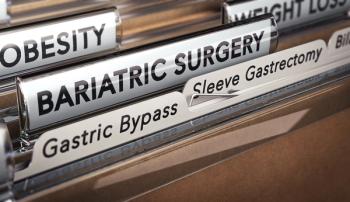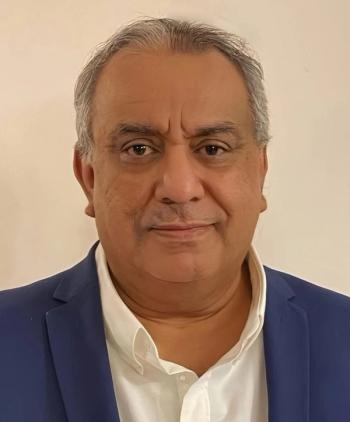
Exclusive report: Physician income is actually improving
Primary care physicians see their practices improve as they become more nimble in a fast-changing world
After years of struggle,
It’s not that PCPs have struck any gushers of new-found wealth. It’s just that, for many,
Physicians and healthcare policy experts attribute the decline in pessimism to a variety of factors, among them that primary care practices are adapting to-and reaping the financial benefits of-new payment models. “There are demonstration projects [of alternative payment models] going on that are bringing more resources to primary care practices through mechanisms like per-member per-month fees and enhanced fee-for-service payments,” says Russell Phillips, MD, director of the Center for Primary Care at Harvard Medical School.
As an example, he cites the Primary Care Demonstration Project,
South County Internal Medicine, an eight-provider practice in Wakefield, Rhode Island, has benefitted financially from its participation in the Primary Care Demonstration Project and from being a patient-centered medical home. “Those [models] have brought some extra cash into the practice,” says Nitin Damle, MD, FACP, a senior partner in South County.
More from the Physician Report:
Damle, who is also president-elect of the American College of Physicians (ACP, adds that he is hearing a “mixed bag” from ACP members about their practices’ finances. In general, he says, those who have started making the transition to alternative payment models are better off than those still operating solely on a fee-for-service basis. “But I would say the majority are still not ready for the changes that are coming the next few years and the move towards quality-based payments,” he adds.
The 87th annual Medical Economics physician survey found a modest increase in the number of doctors reporting that their practice finances had improved compared with the previous year, and a corresponding decrease in the number saying their financial situation had deteriorated (see accompanying table). However, those saying their financial picture had worsened still outnumbered those who saw improvement.
A second development that may have aided primary care practice finances, experts suggest, was the provision in the Affordable Care Act raising Medicaid’s reimbursement rates to the same level as Medicare during 2013 and 2014. “That was a huge thing for a lot of primary care doctors, especially practices that see kids,” says Mark Friedberg, MD, MPP, a senior natural scientist with the Rand Corporation. “If you practice in a state that had Medicaid rates a lot lower than Medicare, you ended up having a pay increase during those years.”
That was the case for Kevin de Regnier, DO, a solo family practitioner in Des Moines, Iowa. Medicaid accounts for about 11% of his practice’s patient mix, and the increased revenue “certainly helped” his practice’s bottom line.
In common with Nitale, de Regnier has benefitted financially from participating in alternative payment models-in his case, the Medicare Shared Savings Program, and an accountable care organization sponsored by Wellmark, one of his commercial carriers. Also helping, he says, has been the decision to begin providing two ancillary services-allergy testing and desensitization therapy.
Related:
“I think most family docs will tell you that the services we provide are undervalued by the healthcare system,” he says. “You can either complain about it or you can do something about it. We decided to add some services, and it’s done well for us.”
An EHR benefit?
Surprising as it may seem, electronic health records (EHRs) may be another reason for the improvements reported in PCP practice finances, says David Gans, FACMPE, senior fellow for industry affairs for the Medical Group Management Association.
Gans acknowledges doctors’ unhappiness with EHRs but notes that “doctors coming out of residency have spent their entire careers working in an EHR environment. Older doctors who have been using the systems for a few years are getting more adept at it, even though the systems themselves may be lousy.”
The poor quality of his EHR system was a major financial headache last year for Daniel Goodman, MD, an internist in solo practice in Dunwoody, Georgia, a suburb of Atlanta. Frustration with his former system led him to change EHRs. “Something a lot of people don’t appreciate is how expensive it is to move your EHR data to a new system. It’s been a huge challenge and a big financial hit for us,” he says.
Partially offsetting that hit, he says, has been the higher reimbursement levels he’s seen since affiliating his practice with the Emory Health Network. One of his contracts through Emory also has a value-based component, through which he realized a financial bonus.
Patient visits rise
By giving more Americans access to healthcare insurance-via Medicaid expansion and establishing insurance exchanges-the Affordable Care Act was expected to boost PCPs’ bottom lines. But that has not happened, at least not yet.
Financial advice:
PCPs report they are seeing more patients (a weekly mean of 86.7 for internists and 89.8 for family/general practitioners versus 85.4 and 89.3, respectively, the previous year), but most practices aren’t feeling that growth in their bottom lines.
Rick Hirsch, DO, a solo family practitioner in the southern California community of Upland, says he’s been seeing between eight and 15 new patients per week since the start of 2014. “Now many more people have some form of insurance and are flocking to doctors to take care of all the chronic problems they weren’t able to have treated before,” he says. “I may have to restrict my practice as far as new patients because it’s growing beyond our ability to keep up.”
Despite being busier, he says, “I’m not seeing the big increases in the bottom line I expected, or would like to see.”
Jeffrey Kagan, MD, an internist in Newington, Connecticut and member of the Medical Economics editorial advisory board, suggests a possible reason for the disconnect. Like Hirsch, Kagan and his partner have been seeing more patients in recent years, but many more of them are covered by insurance plans with deductibles of $5,000 or more. And while those plans often are accompanied by health savings accounts, Kagan says patients often don’t begin contributing to them until they are faced with major medical expenses. The result? “We’re getting stuck by some patients for significant amounts of money,” he says, and the practice’s gross revenues were down from the previous year.
Feeling valued again
Ultimately, however, PCPs’ attitudes about their financial situation may be based as much on emotion as dollars and cents, says the MGMA’s Gans. He maintains that after a long period of neglect, primary care physicians are starting to feel valued again, thanks to the new emphasis on teamwork and patient outcomes in emerging payment models.
“ACOs and PCMHs recognize that they need someone who can coordinate care and reduce the total cost of care by things like reduced hospital readmissions and fewer unnecessary lab tests,” he says. Who does that? The primary care doctor. So PCPs now are getting recognized by their peers for their important role.”
Newsletter
Stay informed and empowered with Medical Economics enewsletter, delivering expert insights, financial strategies, practice management tips and technology trends — tailored for today’s physicians.



















